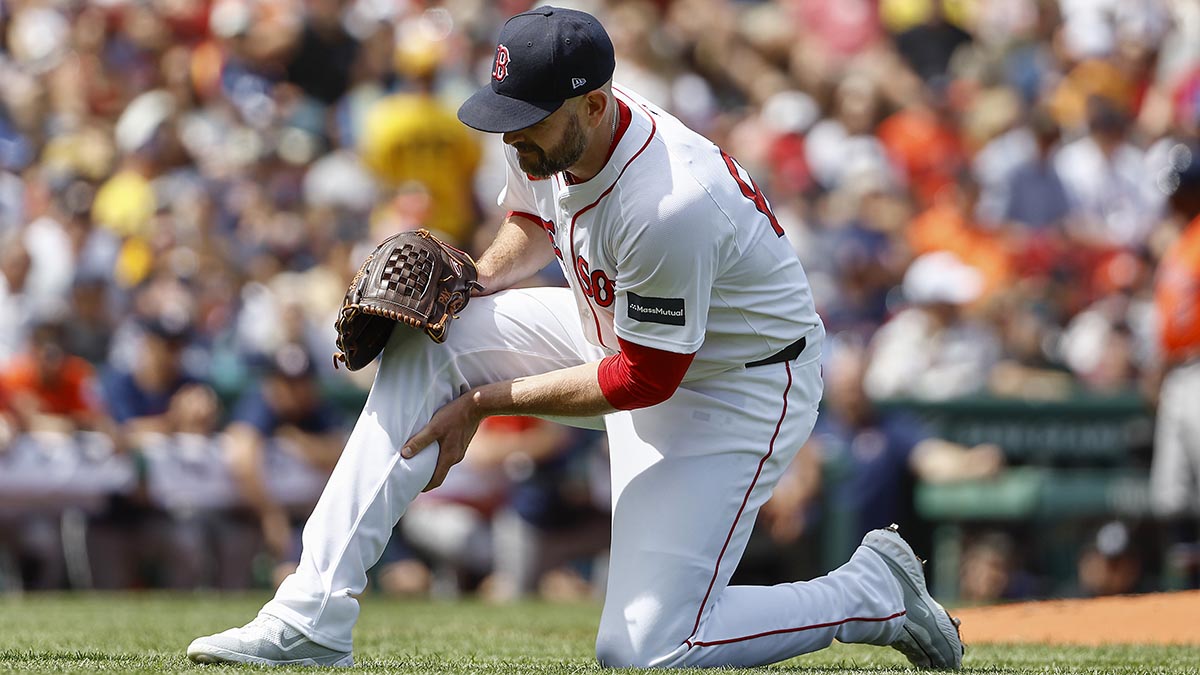Andrew Bailey earned his hosannas in April when the Red Sox led the American League in ERA with something out of 1968. More than half the staff finished the month sporting sub-2.00 ERAs and praise was deservedly heaped upon the pitching coach, who had instituted a counterintuitive philosophy: fastballs bad, sweepy/slurvy stuff good.
"It's understanding that spin in the zone generally produces better outcomes," Bailey said over the winter. "It's understanding for the history of baseball that fastballs are hit the hardest and generate the most slug over a long period of time."
Fast-forward to August, and it's fair to question the staying power of that approach.
Stay in the game with the latest updates on your beloved Boston sports teams! Sign up here for our All Access Daily newsletter.
As promised, the Red Sox rank dead last in percentage of four-seam fastballs thrown, at just 17.5. (The Nationals, by comparison, are at 41.4 percent, and five other teams have at least doubled Boston's rate). Meanwhile, the Red Sox have thrown nearly 1,500 more sweepers than anyone else, their 19.9 percent usage the highest of the Statcast era.
Since the All-Star break, this has not been a recipe for success. The Red Sox have allowed the most homers (52) and highest OPS (.873) of any staff in baseball. Unsurprisingly, their 5.96 ERA in that span is second-to-last behind only the White Sox, who, last we checked, have won just twice in their last 24 games.
So what gives? Break down those 52 homers, and a clear pattern emerges. Red Sox pitchers have surrendered 11 on cutters, 11 on sweepers, and seven on changeups. They've allowed 10 on four-seamers, and the rest have come on a mix of sinkers, sliders, curves, and splitters.
In Wednesday's demoralizing 9-7 loss to the Rangers, the Red Sox blew leads of 2-1, 4-2, and 7-4, all aided by home runs. Adolis Garcia homered on sweepers from Tanner Houck and Luis Garcia, Wyatt Langford tied things with two outs in the ninth on a cement-mixer cutter from Josh Winckowski, and Jonah Heim won it in the 10th by ambushing a first-pitch cutter from Zack Kelly.
The Red Sox didn't help their cause with a pair of costly defensive miscues, but this loss, like so many others over the last month, was about the long ball.
"We've got to keep the ball in the ballpark," lamented manager Alex Cora. "You can talk about sloppiness, but we've got to keep the ball in the ballpark. We haven't done that since the All-Star break. It's damage with men on base, damage late in the game. We've got to figure that out."
MORE RED SOX COVERAGE
Wednesday's results may have been extreme, but they were nothing new. Opponents have been destroying Red Sox cutters in the second half to the tune of a .336 average and .680 slugging percentage. They're slugging .606 on changeups and .519 on sweepers.
Kutter Crawford, for example, has allowed 13 homers in his last four starts, and eight have either come on cutters or sweepers.
There are multiple possible explanations. Perhaps the Red Sox have become predictable and opponents are game-planning for pitches with spin. Perhaps it's not about selection but execution, with pitchers like Houck, in particular, struggling with their command. Or maybe it's about wear and tear, since sweepers uniquely strain the arm, thanks to the combination of arm speed and spin that gives the pitch its sweeping horizontal break.
Whatever it is, it's no longer working.
Making matters worse, Red Sox four-seam fastballs are getting pummeled, too. Opponents are hitting .329 with a .599 slugging percentage since the All-Star break, which means the numbers support what our eyes have been telling us for the last month -- Red Sox pitchers aren't good at anything right now.
Bailey had all the answers for a while. This problem might be beyond his ability to fix, given injuries and workloads, but he's got six weeks to figure something out or the Red Sox will be bemoaning a missed opportunity to make the playoffs.



